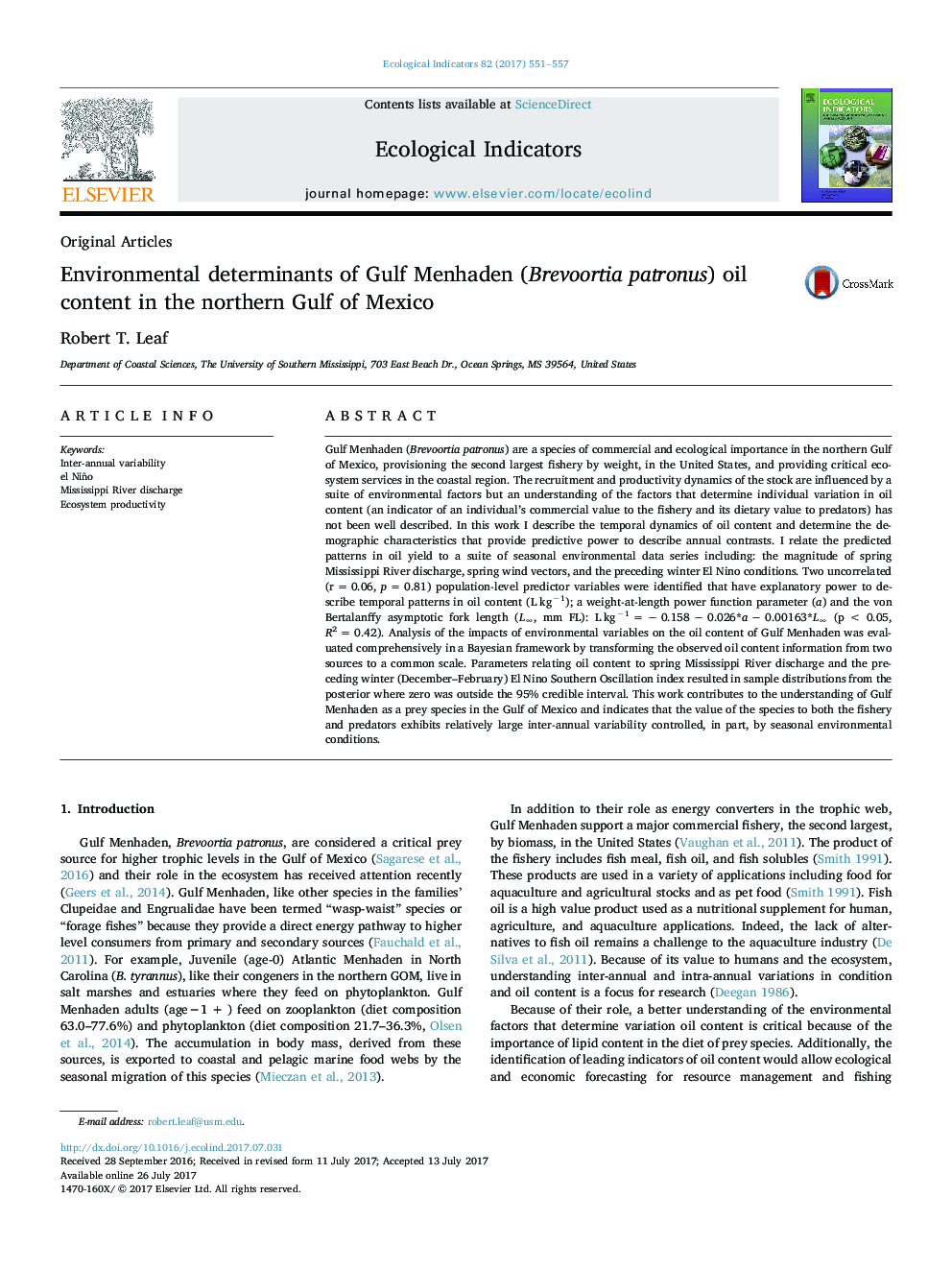| Article ID | Journal | Published Year | Pages | File Type |
|---|---|---|---|---|
| 5741356 | Ecological Indicators | 2017 | 7 Pages |
Gulf Menhaden (Brevoortia patronus) are a species of commercial and ecological importance in the northern Gulf of Mexico, provisioning the second largest fishery by weight, in the United States, and providing critical ecosystem services in the coastal region. The recruitment and productivity dynamics of the stock are influenced by a suite of environmental factors but an understanding of the factors that determine individual variation in oil content (an indicator of an individual's commercial value to the fishery and its dietary value to predators) has not been well described. In this work I describe the temporal dynamics of oil content and determine the demographic characteristics that provide predictive power to describe annual contrasts. I relate the predicted patterns in oil yield to a suite of seasonal environmental data series including: the magnitude of spring Mississippi River discharge, spring wind vectors, and the preceding winter El Nino conditions. Two uncorrelated (r = 0.06, p = 0.81) population-level predictor variables were identified that have explanatory power to describe temporal patterns in oil content (L kgâ1); a weight-at-length power function parameter (a) and the von Bertalanffy asymptotic fork length (Lâ, mm FL): L kgâ1 = â 0.158 â 0.026*a â 0.00163*Lâ (p < 0.05, R2 = 0.42). Analysis of the impacts of environmental variables on the oil content of Gulf Menhaden was evaluated comprehensively in a Bayesian framework by transforming the observed oil content information from two sources to a common scale. Parameters relating oil content to spring Mississippi River discharge and the preceding winter (December-February) El Nino Southern Oscillation index resulted in sample distributions from the posterior where zero was outside the 95% credible interval. This work contributes to the understanding of Gulf Menhaden as a prey species in the Gulf of Mexico and indicates that the value of the species to both the fishery and predators exhibits relatively large inter-annual variability controlled, in part, by seasonal environmental conditions.
